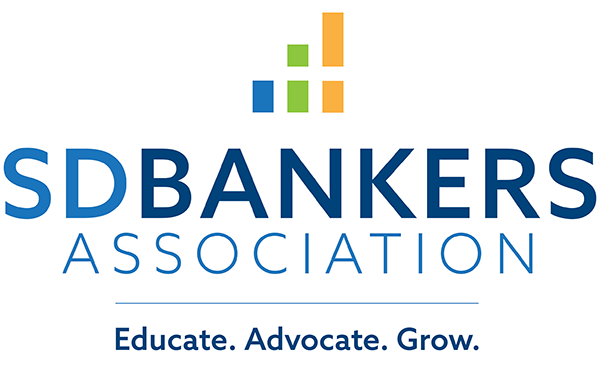- Education & Events
- Advocacy
- Products & Services
- Membership
- Resources
- SDBANKER Magazine
- SDBA eNews
- SDBA eNews Archives
- Legislative Update/Bill Watch
- South Dakota Bank Directory
- Women in Banking
- Scenes of South Dakota Calendar*
- Holiday Signs
- Regulatory Report
- South Dakota Banking Code
- Record Retention Manual
- Advertising & Sponsorship Guide
- COVID-19 Resources
- Mental Health and Crisis Prevention
- About
|
Overview | Information | Procedures | Customer Notification | Thumbprint FAQs Thumbprint Signature Program FAQIs there a deadline for participating in the program and ordering supplies?No, banks can join the program at any time simply by contacting the SDBA or ordering online. Orders for touch pads, door decals, and other materials are accepted in an as-need basis. Please allow 3-4 business days for delivery.
How do I order ink pads and supplies?Contact Halley Lee to order ink pads and/or notification signs with the Thumbprint Signature logo. Will the fingerprint actually be visible on the check?Yes, the fingerprint will be immediately visible on the check so that a bank employee can tell if there is a good impression. The “inkless” feature refers to the fact that the fingerprint pad will not leave a residue on your hand. In addition, the print is clearly visible on a photocopy or microfilm of the check.
Will the inkless touch pad fit through the pneumatic tubes in the drive-through?Yes, the pad is only about two inches in diameter and should easily travel through the pneumatic tubes in the drive-through.
Can a bank require a fingerprint on a government check?Yes, a bank can require a fingerprint when cashing a government check for a noncustomer, provided that, the bank has not entered into an agreement with a regulator or other government entity under which it agrees to cash government check for noncustomers on the same terms as it cashes checks for its customers.
Where are the thumbprints stored, and is a database maintained?The thumbprint check travels through the normal channels of the bank, just as any check would. The check is not segregated and no database is maintained. The thumb-printed check is used by law enforcement agencies only in the case of check fraud.
What should I do if I suspect check fraud?Tellers and officers should follow established reporting procedures regarding known or suspected fraudulent transactions, including contacting local law enforcement personnel, as well as the FBI.
What about the angry noncustomer?The program has met with only minimal public criticism (less than 1% of noncustomers refused to provide thumbprints in the pilot program). If a noncustomer objects to providing a thumbprint, you have two options: invite him/her to open an account, or refer the person to another institution. Not all banks are participating in the program at this time. Although it is best if bank personnel avoid engaging in a discussion of the legalities of the program, you should be assured that the request for a thumbprint of a noncustomer is not a violation of either federal or state law.
Must the bank obtain a fingerprint on every noncustomer?Each bank participating in the Thumbprint Signature program is advised to have written policies and procedures governing how the program will be used. Although a bank has some discretion in establishing its policy, it is critical that the policy is applied consistently to avoid allegations of discriminatory treatment. For example: If a bank’s policy is to require a fingerprint on all noncustomers cashing a check, whether an “on-us” check or otherwise, the policy must be applied consistently. Tellers and other bank personnel should not be authorized to waive or modify the policy.
These are just a few examples of the way a bank can structure its policy on the Thumbprint Signature program. Generally, the simpler the policy, i.e., requiring fingerprints on all on customers, the easier it will be to carry out. In evaluating your policy, be mindful that unlawful discrimination can occur in three ways:
|
